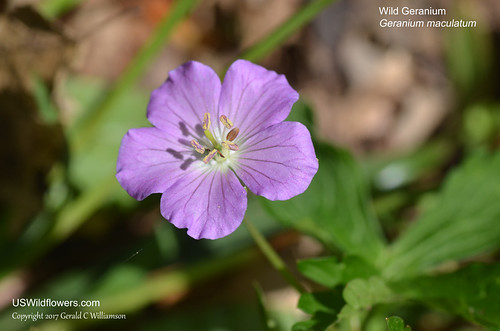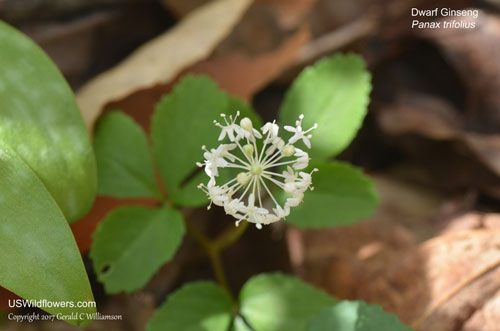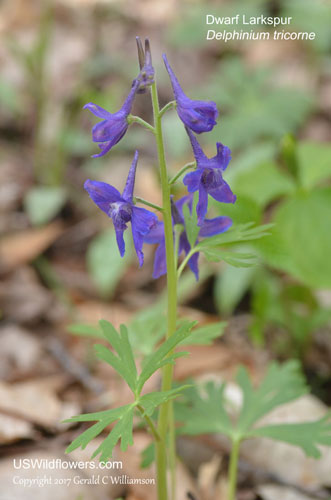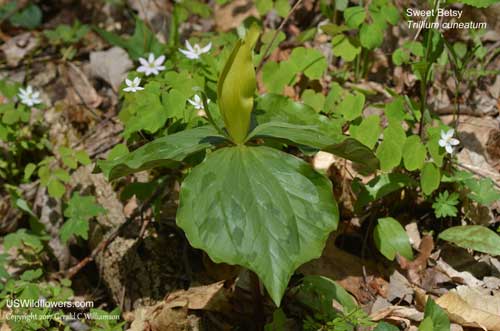A discussion on Facebook a few days ago reminded me that the Collins Gulf area of Savage Gulch State Natural Area in Grundy County, TN was on my list of areas I wanted to check out for wildflowers. Originally I had targeted it because of reports of Fringed Phacelia (Phacelia fimbriata), but when I photographed that species in the Smokies, Collins Gulf got bumped down a few places on my list. But I wanted to get into a wilderness with my grandson while he was on spring break this week, so I bumped it back up. Checking the weather, Tuesday, April 4, was forecast as the best day, and this time the weatherman was right – rain on Monday gave us good water for the waterfalls, and a beautiful, sunny day showed up Tuesday morning – as forecast. Grandson Joseph and I headed out about 9 AM for the 50-mile drive to the Collins Gulf West Trailhead of Savage Gulch, for Waterfalls and Wildflowers (31 species; see the list at the end of the post.)
I was originally confused about the “Collins Gulf West Trailhead” name for this trailhead/parking area – it’s on the southeastern end of the Collins Gulf Trail. A bit of speculation, however – the Collins River is running southeast to northwest, and a mile or so further upstream (southeast) is another steep area, so that may be “Collins Gulf East.” So it’s not the “west trailhead”, it’s the trailhead on “Collins Gulf West” – located near the end of 55th Avenue of Gruetli-Laager, TN.
That being said, Collins Gulf Trail is really a great walk in the woods, and especially in the spring when the water is running well and the temperatures are cooler than during the hot, dry summer. Those cooler temps are particularly important to me on these more strenuous hikes, and even though the out-and-back to Horsepounds Falls is “only” about 5.25 miles, it is strenuous – sometimes steep (around 600′ elevation change between the falls and the parking lot), and sometimes rugged – long sections rock-hopping and threading boulders, and sometimes steep and rugged at the same time. Also remember that wet means slippery, so be cautious, and lots of rocks and roots can twist ankles, so wear some good hiking shoes or boots. Remember to take plenty of water, or be prepared to treat or filter water from the creeks and rivers.
The trail starts out of the parking with some slight elevation change and a couple of twists in the trail, leading past the side trails to the campground (camping only in designated, reserved sites in Savage Gulch) about a quarter of a mile from the parking area. At the second trail to the campground is a spring, and then the start of the descent to Suter Falls in Rocky Mountain Creek. After the first somewhat rugged descent (including a section of nearly 40 rock steps), the Collins Rim Trail continues straight, and the Collins Gulf Trail takes a left, and down, to Suter Falls.

Joseph crosses the cable bridge over Rocky Mountain Creek just below Suter Falls in Savage Gulf State Natural Area
After crossing the cable bridge over Rocky Mountain Creek, the trail goes rugged again, and follows the base of the bluff for a while. Along this area there were quite a few yellow violets (Viola pubescens), but not too many other wildflowers. However, once the trail left the bluff and headed down into the Collins Gulf (West), we spotted a few Sweet Betsy Trilliums (Trillium cuneatum), and then a bit lower many other wildflowers started showing up. Among the most conspicuous were the Large-flowered Trilliums (Trillium grandiflorum), and many, many Rue Anemone (Thalictrum thalictroides).
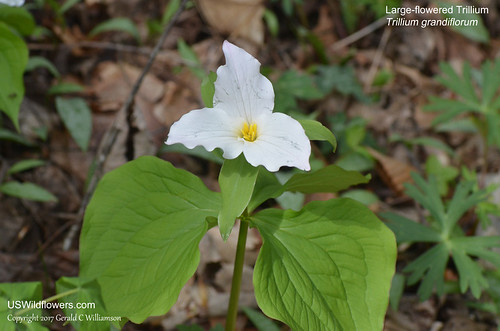
One of many, many Large-flowered Trillium – Trillium grandiflorum – blooming along Collins Gulf Trail
As we continued to wind our way down into the gulf, the wildflowers got thicker and thicker, with Wild Blue Phlox (Phlox divaricata) becoming prominent, but one of my more exciting finds was a new “lifer” for me – Dwarf Ginseng (Panax trifolius). I had gotten down onto my knees to photograph a Trillium, and as I checked around to make sure I wasn’t crushing anything, I saw the tiny (tiny!) circle-appearing balls of the Dwarf Ginseng flowers.
Nearby were Dutchman’s Breeches, which we saw scattered all along the lower portion of the trail as we neared the bottom, as well as Dwarf Larkspur and the occasional patch of Purple Phacelia.
We were apparently too early to see the Fringed Phacelia, but there were so many other wildflowers to see that certainly didn’t dampen my enthusiasm. As the trail rolled along the Collins River, I saw this Sweet Betsy, which looked yellow to me when I first saw it, so I wondered if it was Trillium luteum instead of T. cuneatum, but on the way back out with the brighter sun I saw that it had more of a greenish cast than I originally thought. I decided to make the final test, risking the allergic reaction I almost alway get when sniffing Trilliums, and got the definite aroma of apples rather than lemons – definitely T. cuneatum.
Just as Joseph and I were beginning to wonder how much further it was to Horsepound Falls, we topped a hill and heard the roar of the water. Shortly thereafter we came to the sign pointing out the side trail down to the falls, and headed down for some rest, lunch, and playtime. It had taken us about 2 hours to get down to Horsepound, largely because of the several stops I made to photograph wildflowers. Joseph set a harder pace on the way out (I couldn’t keep up with him, but he kindly stopped to wait for me several times) and we got back to the trailhead in about 1.5 hours. (See the complete list of wildflowers I saw below the next photo.)
Wildflowers seen on this hike (in no particular order):
- Wild Strawberry (Fragaria virginiana)
- Common Blue Violet (Viola sororia)
- Yellow Violet (Viola pubescens)
- Halberdleaf Yellow Violet (Viola hastata)
- Canada Violet (Viola canadensis)
- Long-spurred Violet (Viola rostrata)
- Bird’s Foot Violet (Viola pedata)
- Hepatica (few) (Anemone acutiloba)
- Cutleaf Toothwort (Cardamine concatenata)
- Slender Toothwort (Cardamine angustata)
- Carolina Spring Beauty (Claytonia caroliniana)
- Star Chickweed (Stellaria pubera)
- Trout Lily (Erythronium americanum)
- Rue Anemone (Thalictrum thalictroides)
- Blue Cohosh (Caulophyllum thalictroides)
- Dutchman’s Breeches (Dicentra cucullaria)
- Heartleaf Foamflower (Tiarella cordifolia)
- Wild Geranium (Geranium maculatum)
- Cumberland Spurge (Euphorbia mercurialina)
- Sweet Betsy – several color forms (Trillium cuneatum)
- Large-flowered Trillium (Trillium grandiflorum)
- Southern Red Trillium (Trillium sulcatum)
- Redbud (Cercis canadensis)
- Purple Phacelia (Phacelia bipinnatifida)
- Large-flowered Bellwort (Uvularia grandiflora)
- Wild Blue Phlox (Phlox divaricata)
- Squawroot (Conopholis americana)
- White Baneberry (Actaea pachypoda)
- Dwarf Larkspur (Delphinium tricorne)
- Dwarf Ginseng (Panax trifolius)
- Wood Anemone (Anemone quinquefolia)

